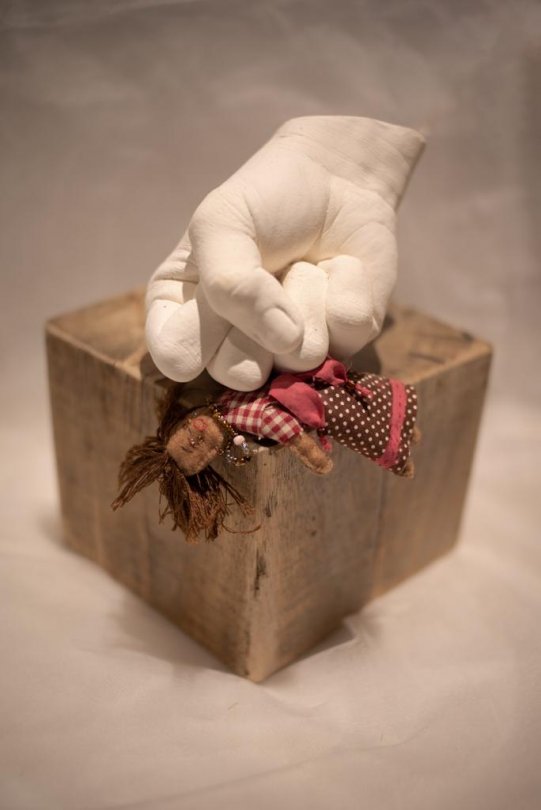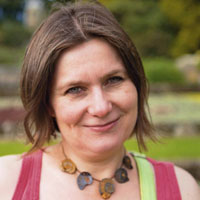I have worked in the NHS for 26 years, within a variety of settings: with people with learning disabilities, a women’s prison, and for the last 11 years on three acute mental health wards, where the patients had depression, psychosis and dementia. Recently I have come full circle and returned to outpatient work with people living with the effects of complex trauma and personality disorders.

The first picture ‘Rag Doll’ is inspired by this extract from a young service user’s poem, which was read out in a Safeguarding event in 2019, organised by NHS England:
I’ve been thrown, grabbed, pushed around
Just like a rag doll.
Can’t anyone see what I hold back?
Can’t anyone see that I’m alone
In this wrenching pain?
Can’t any one see what I’ve seen?
I was struck by the sense of distress and total helplessness expressed in the idea of a person as a rag doll, and I thought about how this could be expressed using a contrast between the soft textiles and the hard materials.

The second sculpture is in response to the theme of the event ‘Think Family’, directing professionals to be aware of the whole family’s needs. For instance, in cases of domestic violence, the whole family including the children are likely to be traumatised by the abuse occurring; the perpetrator of abuse often also needs support, therapy and psychoeducation, very likely being subjected to abuse themselves in the past.
Working in the NHS is a life of constantly having to respond and adapt yourself to the ebbing and flowing of forces beyond your control, a constant process of change that can be both rewarding and extremely challenging. We create therapeutic spaces out of nothing, we pack up and move, services expand, services retract, funding is allocated and withdrawn, we train and retrain, we get inspected, we get praised and promoted and downgraded and ignored. Having just gone through a bruising re-deployment process (for the third time!) I have had to call upon the resilience and inspiration that my creativity gives to me; like the deep roots of an oak tree standing firm through the storm. I am sure this experience is shared by many art therapists, when we have needed to ask ourselves: ‘Why do I do what I do? Why do I invest so much in this work, when others often regard it as invisible, worthless, superfluous? Can I really start again? ’ The answer lies within: we do it because we passionately believe in the power of creativity, and we want to share it with others. For all those feeling the pressure of these uncertain times – keep the faith!
Copyright (c) The British Association of Art Therapists (BAAT)
This article is published in BAAT Newsbriefing Summer 2020 and may not be distributed or published without the consent of BAAT
